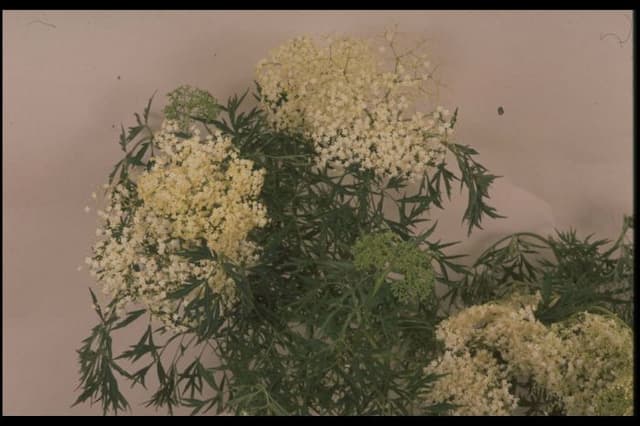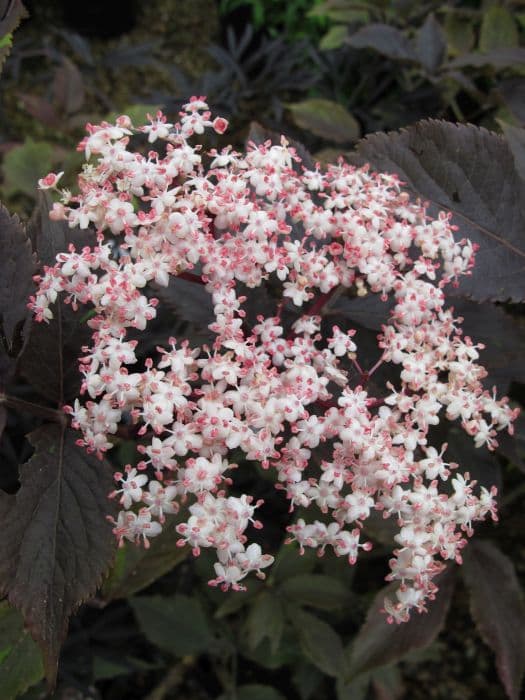Wrinkled viburnum 'Roseum' Viburnum rhytidophyllum 'Roseum'

ABOUT
'Roseum' is a vigorous evergreen shrub with lance-shaped, deeply-veined glossy dark green leaves. Pink flower buds open to creamy yellow-white flowers in late spring.
About this plant
 Names
NamesFamily
Adoxaceae
Synonyms
Leatherleaf Viburnum, Wrinkled Viburnum
Common names
Viburnum rhytidophyllum 'Roseum'.
 Characteristics
CharacteristicsLife cycle
Perennials
Foliage type
Evergreen
Color of leaves
Green
Flower color
Pink
Height
6-8 feet (1.8-2.4 meters)
Spread
6-8 feet (1.8-2.4 meters)
Plant type
Shrub
Hardiness zones
5-7
Native area
China
Benefits
 General Benefits
General Benefits- Ornamental Appeal: 'Roseum' has attractive evergreen foliage and clusters of pink-tinted white flowers that add aesthetic value to gardens.
- Wildlife Attraction: The flowers are a food source for pollinators, while the fruit can attract birds.
- Privacy Screen: With its dense growth habit, 'Roseum' can serve as a natural privacy screen or hedge in landscapes.
- Durability: It is a hardy plant that can withstand a range of soil conditions and is relatively pest and disease resistant.
- Low Maintenance: Once established, 'Roseum' requires minimal care besides occasional pruning to maintain its shape.
- Year-Round Interest: Its evergreen leaves provide color and texture to the garden throughout all seasons.
- Versatility: It can be used in various landscape designs, including formal gardens, cottage gardens, or as a stand-alone specimen.
- Tolerance: 'Roseum' is tolerant to drought, making it suitable for xeriscaping and low-water-use gardens.
 Medical Properties
Medical PropertiesThis plant is not used for medical purposes.
 Air-purifying Qualities
Air-purifying QualitiesThis plant is not specifically known for air purifying qualities.
 Other Uses
Other Uses- Privacy Screening: Leatherleaf viburnum can be grown as a dense shrub, making it effective for privacy screening or as a windbreak in a garden setting.
- Textural Contrast: Its deeply veined, leathery leaves provide textural contrast when planted alongside plants with smoother, finer foliage.
- Backdrop for Perennials: It serves as an excellent backdrop for flowering perennials, enabling their colors to stand out more prominently.
- Natural Fencing: With its robust and tall growth habit, leatherleaf viburnum can be used to create a natural fence line between property borders.
- Erosion Control: Due to its extensive root system, it can be planted on slopes or areas prone to erosion to help stabilize the soil.
- Bird Habitat: The dense foliage offers shelter and nesting sites for a variety of bird species, thus promoting biodiversity.
- Sound Barrier: When planted in a row, leatherleaf viburnum can help reduce noise pollution from roads or neighbors.
- Butterfly Garden: The flowers can attract butterflies and other pollinators, making it a suitable choice for a butterfly garden.
- Seasonal Interest: Its creamy-white flowers in spring and red to black fruits in the fall provide multi-seasonal interest in the landscape.
- Fall Coloration: Although it’s an evergreen, in some climates leatherleaf viburnum can take on a reddish hue in fall, granting additional color to an autumn garden.
Interesting Facts
 Feng Shui
Feng ShuiThe plant Leatherleaf Viburnum is not used in Feng Shui practice.
 Zodiac Sign Compitability
Zodiac Sign CompitabilityThe plant Leatherleaf Viburnum is not used in astrology practice.
 Plant Symbolism
Plant Symbolism- Renewal: The Viburnum rhytidophyllum 'Roseum', commonly known as Leatherleaf Viburnum, often symbolizes new beginnings or renewal due to its characteristic of producing fresh leaves and blossoms every spring.
- Protection: Leatherleaf Viburnum is known for its dense foliage, which provides shelter for wildlife, thereby symbolizing protection and refuge.
- Abundance: The plant is prolific in berries, which represent abundance and fertility.
- Perseverance: The robust nature of Leatherleaf Viburnum, capable of withstanding various conditions, makes it a symbol of perseverance and resilience.
 Water
WaterThe Leatherleaf Viburnum should be watered deeply once a week, providing approximately 1 to 1.5 inches of water each time. During hot or dry spells, watering frequency may need to increase to twice a week. Allow the soil to dry out slightly between watering sessions to prevent root rot. The best method is using a soaker hose or drip irrigation to ensure that water goes directly to the roots rather than splashing on the leaves. It is important to avoid over-watering, as the plant does not tolerate standing water.
 Light
LightThe Leatherleaf Viburnum prefers full sun to partial shade. It thrives best in a location that receives at least six hours of direct sunlight but is also protected from the harsh afternoon sun. Dappled or partial shade is suitable, especially in regions with very hot summers, as it prevents the foliage from scorching.
 Temperature
TemperatureThe Leatherleaf Viburnum is hardy and can tolerate a range of temperatures, usually between 5°F and -10°F. The ideal temperature range for this shrub is between 50°F and 70°F. It can survive short periods of colder winter temperatures, but prolonged exposure to temperatures below -10°F may damage the plant.
 Pruning
PruningPruning the Leatherleaf Viburnum is generally done to shape the plant, remove dead or damaged wood, and encourage a bushier growth habit. The best time to prune is late winter or early spring before new growth begins. Pruning every year is not necessary; every two to three years is sufficient unless you are controlling size or shaping the bush. Prune out the oldest stems to rejuvenate the plant as needed.
 Cleaning
CleaningAs needed
 Soil
SoilLeatherleaf Viburnum prefers well-drained soil with a lot of organic matter; a mix with equal parts garden soil, peat, and perlite is ideal. The soil pH for optimal growth should be slightly acidic to neutral, between 5.6 and 7.5.
 Repotting
RepottingLeatherleaf Viburnum typically does not need frequent repotting and can often thrive in the same pot for several years. Assess every 2-3 years and repot if the roots become crowded.
 Humidity & Misting
Humidity & MistingLeatherleaf Viburnum is adaptable and does not require specific humidity levels; however, it enjoys moderate atmospheric moisture similar to that of its natural woodland habitat.
 Suitable locations
Suitable locationsIndoor
Provide bright indirect light and water when soil feels dry.
Outdoor
Plant in partial shade, mulch well, water regularly.
Hardiness zone
5-8 USDA
 Life cycle
Life cycleViburnum rhytidophyllum 'Roseum', commonly known as leatherleaf viburnum, begins its life cycle as a seed, which upon germination grows into a young seedling. The plant then enters a juvenile vegetative stage, where it rapidly expands its root system and foliage to become an established shrub. As it matures, it initiates the flowering stage, typically developing creamy-white flower clusters that have the potential to turn pink, blooming mainly in the spring. After pollination, these flowers give way to red fruit that later matures to black, entering the fruiting stage where seeds are dispersed for the next generation. The plant continues to grow larger with age, potentially reaching up to 10-15 feet in height and 10 feet in width, with a significant thickening of its leathery leaves and robust branching. Throughout its life, the leatherleaf viburnum experiences cycles of growth, flowering, and dormancy, particularly in regions with cold winters, where it enters a period of rest before resuming growth in the spring.
 Propogation
PropogationPropogation time
Early Spring
The most popular method of propagating the Leatherleaf Viburnum, Viburnum rhytidophyllum 'Roseum', is through softwood cuttings. This technique is usually done in late spring to early summer when the plant's new growth is still tender yet mature enough to handle the stress of cutting. To take a cutting, a 4 to 6-inch (about 10 to 15 centimeters) length of stem is selected, ideally with a few sets of leaves, and the bottom part is cut just below a leaf node. The lower leaves are then stripped off, and the cut end is dipped in rooting hormone to encourage root development. The prepared cutting is then inserted into a pot filled with a mix of peat and perlite for good drainage and moisture retention. The pot is kept in indirect sunlight and maintained with consistent moisture. Roots typically form within a few weeks, after which the new plant can be transferred to a larger container or directly into the garden.









